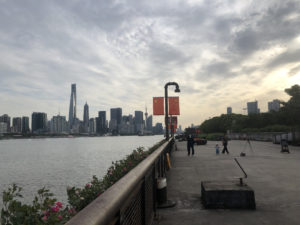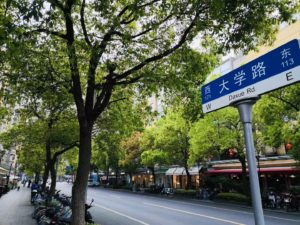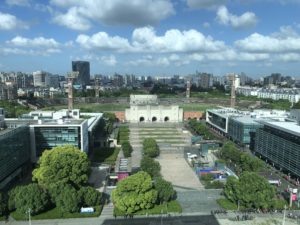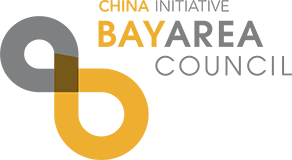Yangpu District: A Model of China’s Economic Transformation

The Bay Area Council arrived in Yangpu in 2008, just as the district was beginning its transition from an economy based on manufacturing and logistics, to one driven by innovation and education. While the district has always been at the forefront of China’s modernization, accounting 25% of Shanghai’s total industrial output through the 1980s, it was not until the mid 2010’s that Yangpu became the model for the economic transformation that is sweeping the rest of the country. Bay Area Council member companies were not only a key part of that economic transformation, they have also left their mark on the skyline. Architecture firm Heller Manus, based out San Francisco, redesigned much of the district’s waterfront to create acres of parkland from an area once covered with factories.
Making this central part of Shanghai welcoming place for international business began with the economic reforms of 1978; a watershed moment for much of modern China. Since then, Yangpu has been in a continuing process of improving its business environment, contract laws, and the efficiency of their bureaucracy. The results are not only visible in the technology sector surrounding Fudan University, but in a gross domestic product that reached 210 billion yuan in 2020.
A District for the Creatives in the Largest City on Earth

Having opened an office in the Knowledge & Innovation Community (KIC) Industry Zone near the heart of Yangpu, the Bay Area Council was able to witness firsthand a decade of remarkable city planning and the rapid growth of the district that followed.
One of the first projects completed was University Street, a mixed residential and entertainment development extending south of Fudan University. Inspired by Stanford’s own University Avenue in California, the new development established a “college town” atmosphere, with all its benefits, within Yangpu’s dense metropolis.
Shortly following was the construction of the Wujiaochang transit hub and its famed Wanda Plaza shopping complex, which linked the district directly to Pudong International Airport, Hongqiao International Airport, and Shanghai Railway Station. It also connected Tongji University and Fudan University with KIC startup incubators, fostering a high-tech innovation ecosystem like that of the San Francisco Bay Area and Silicon Valley.
Concurrent with this important transit infrastructure was the development of new residential areas and parkland for Yangpu’s 1.3 million residents. To alleviate traffic, these dense residential zones were built within proximity to the district’s largest employment hubs: Wujiaochang, KIC, and the district’s ten universities. Now, over a decade since its doors opened in China, the Bay Area Council’s Shanghai Office continues to operate in one of the most complete examples of urban planning in the world.
The Bay Area Council and KIC

The initial draw for the Bay Area Council to expand to China was the Knowledge & Innovation Community. A novel concept at its inception, the KIC Industrial Park was intended to inspire an innovation ecosystem similar to that of Silicon Valley. With this new technology zone established between Fudan and Tongji universities and another dedicated for the creation of startup support programs and incubators, KIC included many features meant to specifically foster technological and economic growth. However, planners eventually realized it was still missing some of the specialized business connections characteristic of Silicon Valley and surrounding Bay Area. As a result, the Bay Area Council, with its familiarity with innerworkings of the region, was specially invited to join the KIC project and serve as a conduit between Silicon Valley and Yangpu.
Today, KIC is one of the most successful technology driven industrial parks in China, right behind Beijing’s Zhongguancun. It is a model of incredible economic transformation and technological innovation that has since been replicated across China and the Bay Area Council remains at the center of.
